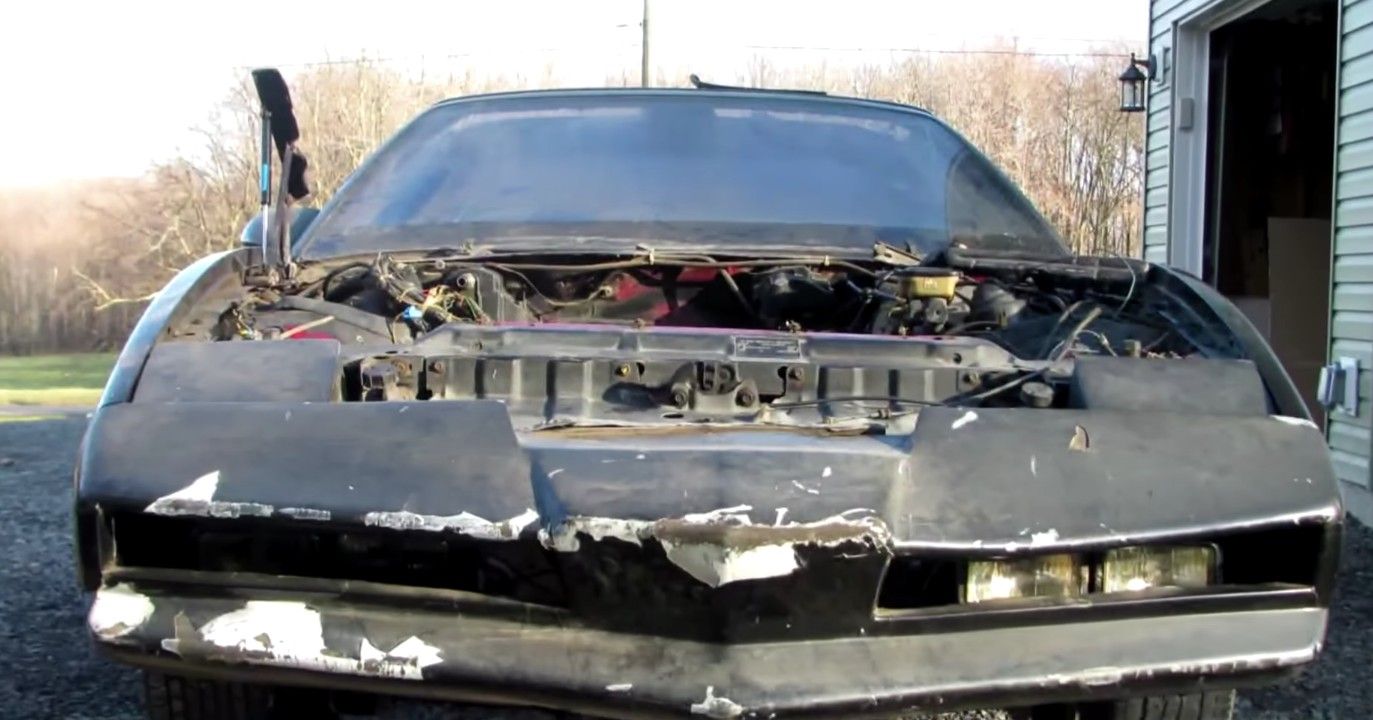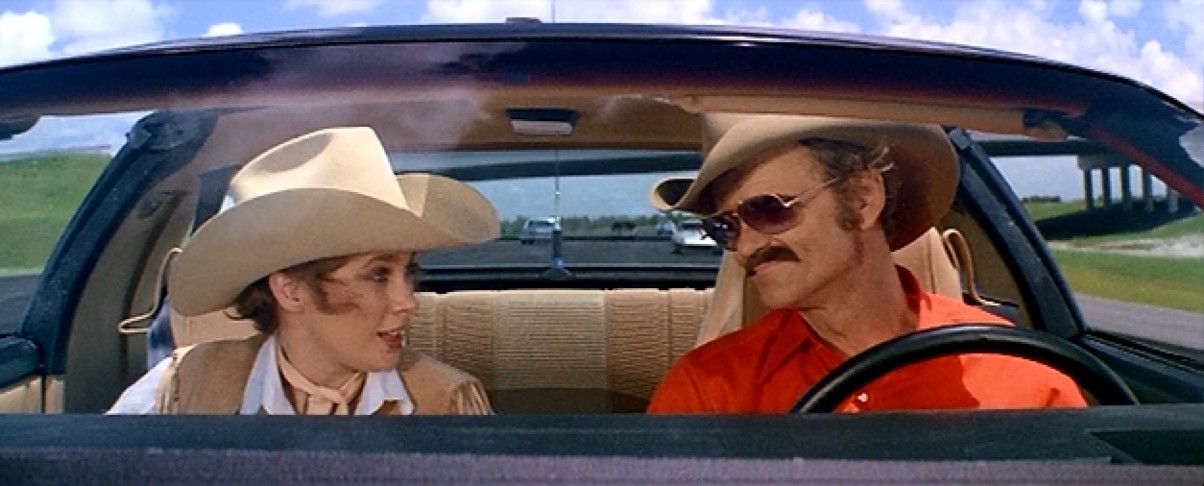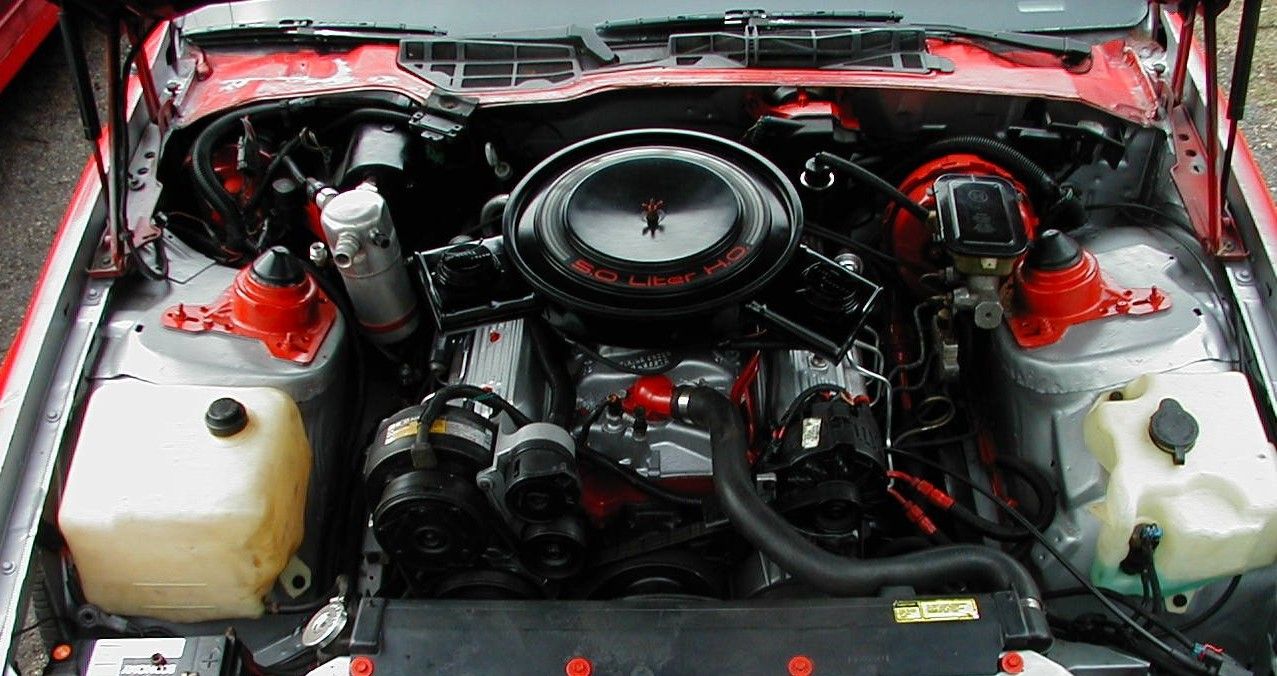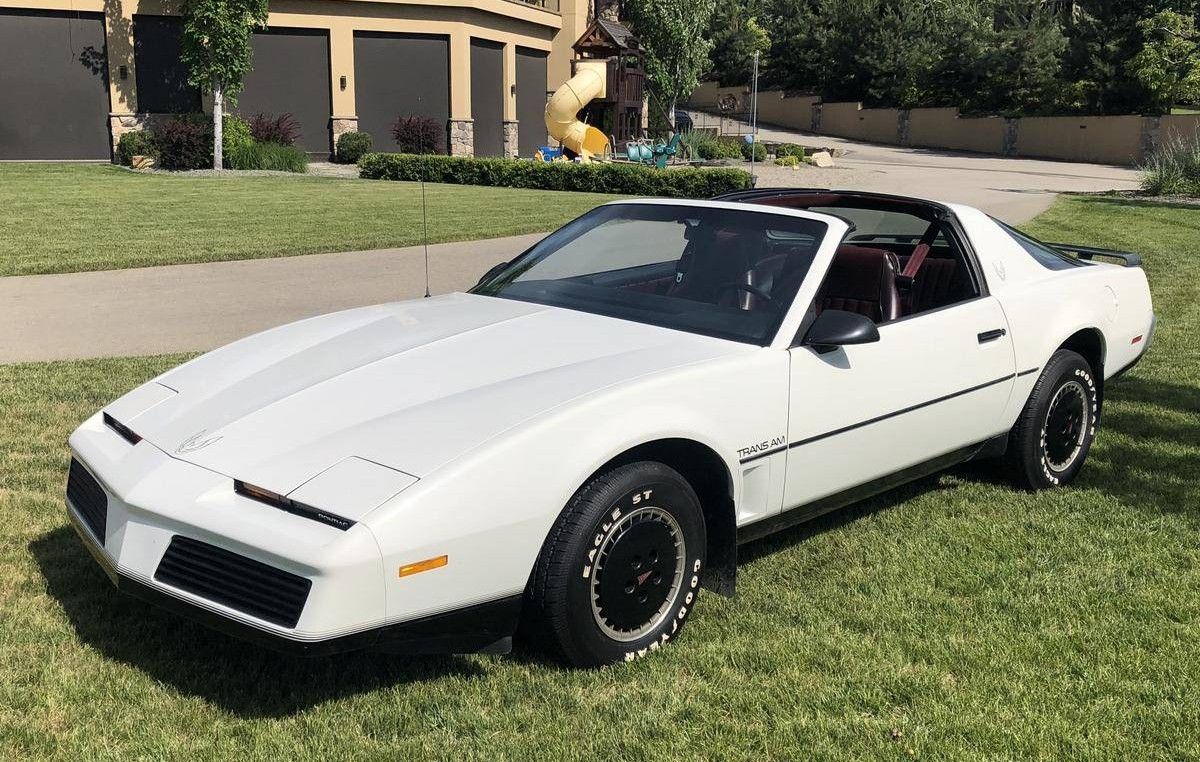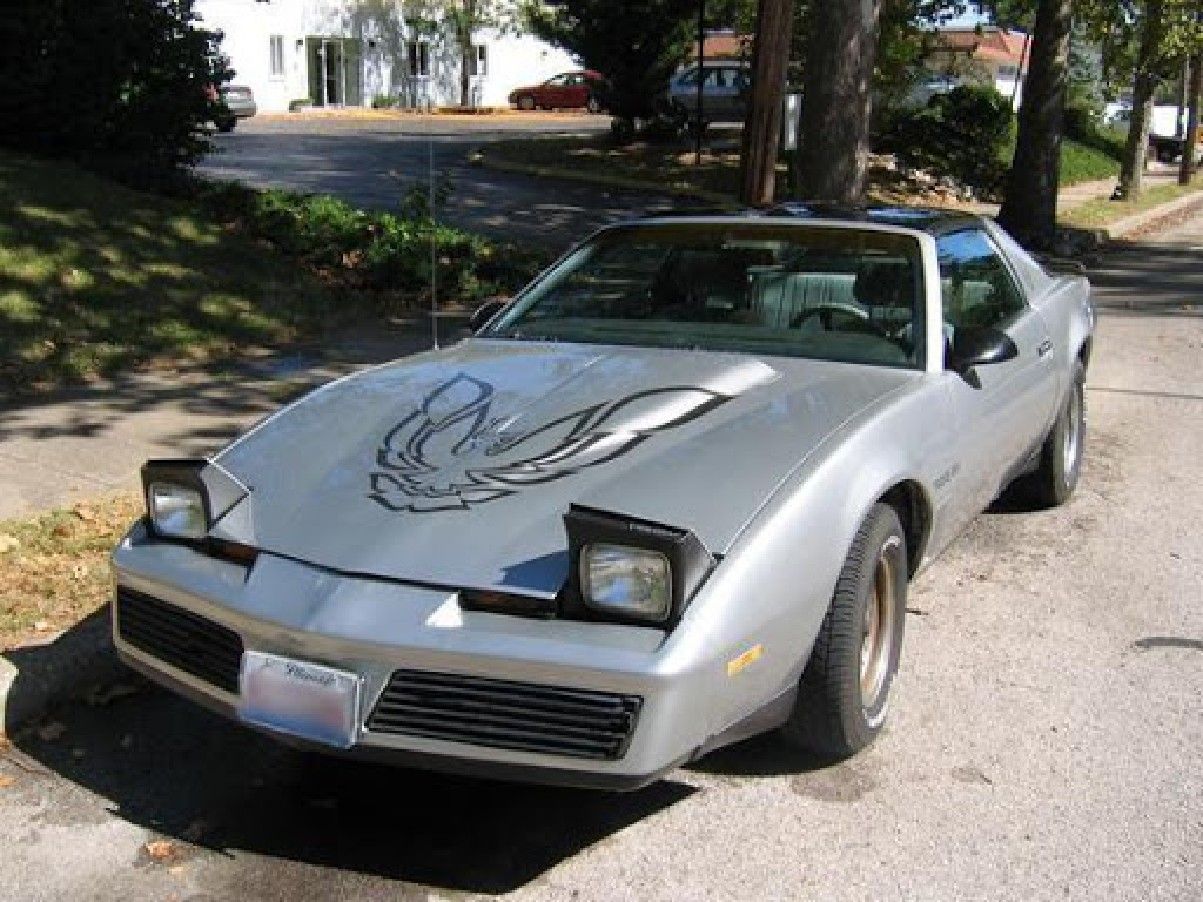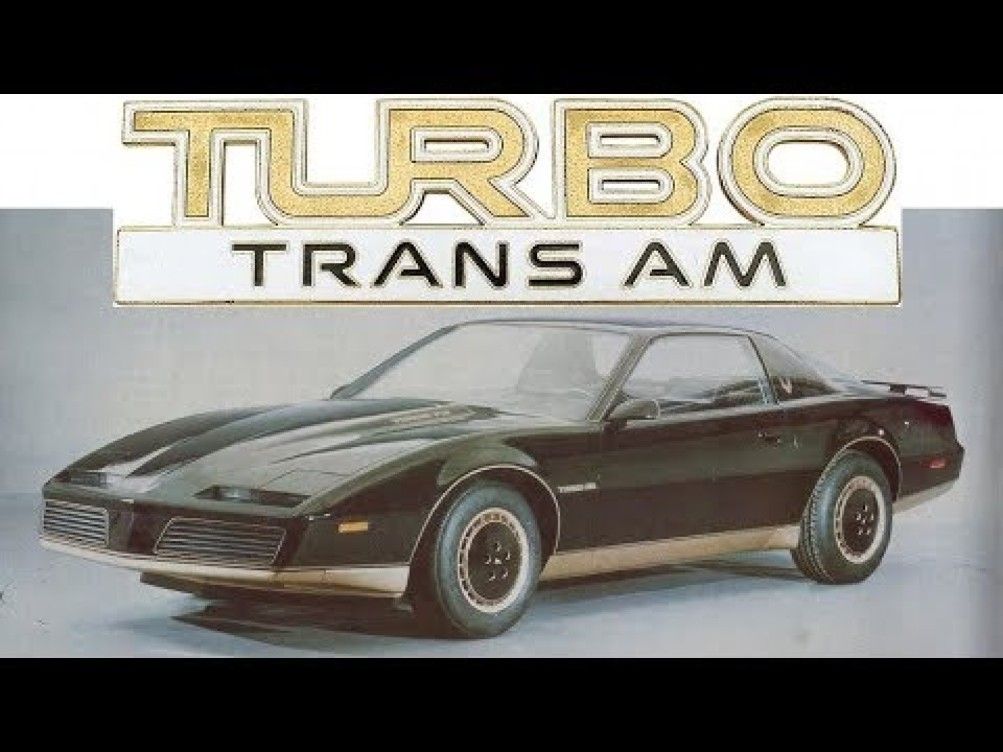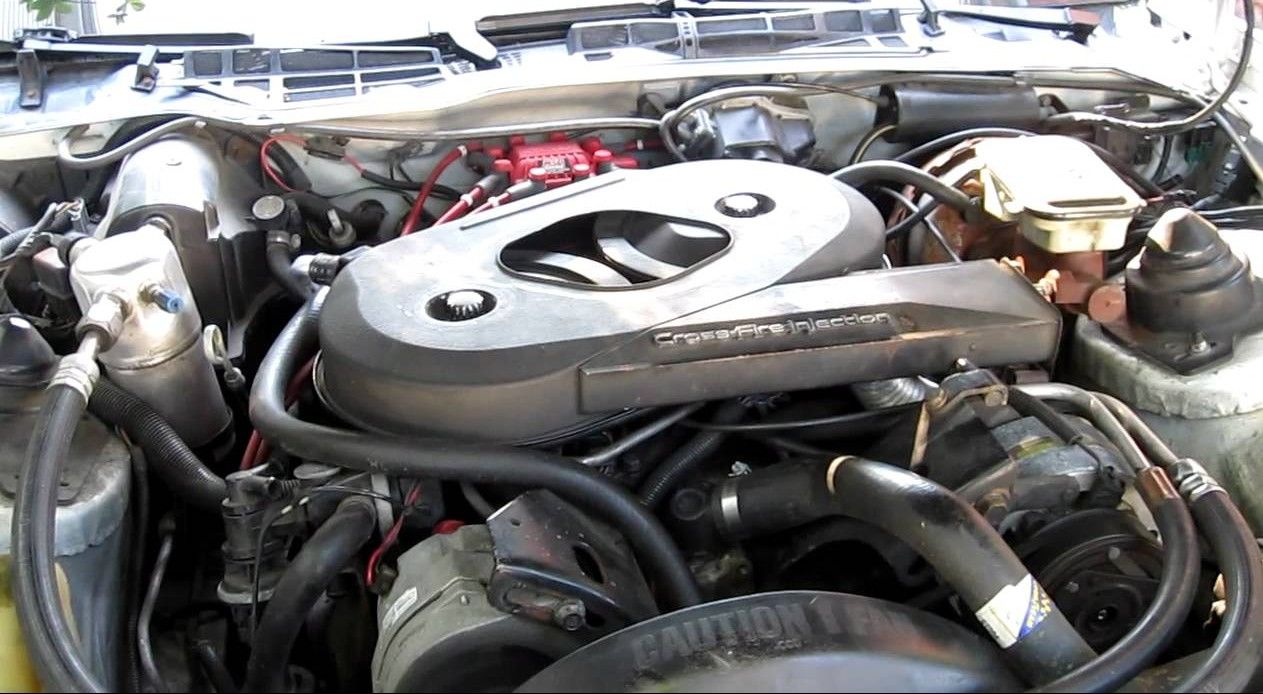Bettering the disappointing 1980-81 Pontiac Turbo Trans-Am, in 1982 Pontiac came out with an even more embarrassing car with even less performance.
Saved only by the television show Knight Rider, the 1982 model was possibly Pontiac’s worst Firebird ever. Yes the car was blase’ in looks, but it was the crappy mechanicals that really made this thing a lemon. Imagine having the middle of the road 4 cylinder power from an engine with an extra 4 cylinders and 3 liters more displacement! A whopping 145 H.P. and it didn’t even have overdrive that year. The bizarre interior and gauge cluster had one bragging right, it wasn’t as ugly as the even stranger 1982 Camaro. This car was designed for and by people in California, it must have been as it was Hollyweird!
The car even starred in the flop "Smokey and The Bandit III" which only had Burt Reynolds in a cameo role, bad karma!
Wimpy Drivetrain, Underwhelming Performance
Apparently that was one of two years you could have your choice of 1 or 2 throttle bodies for the fuel injection, but even the twin throttle body version was only 165 H.P. You got all the weak parts left over from the v-6 mid size cars put into your pseudo-muscle car. Because convertibles had long since been outlawed by not meeting the roll-over standards of the day, you could only get the popular T-Tops of the day.
The problem was most of them leaked water. The 3rd generation F-Body was all about weight savings and successfully shed 500 lbs from the last of the 2nd generation cars, which ended up about the same as the early 1st and 2nd generation cars. Consumer Reports supposedly complained about body squeaking when testing the car as new. The car was aerodynamic and its low drag coefficient resulted in good fuel economy of better than 19 m.p.g. on the highway without overdrive. The quality of the bodies weren’t very good as they would twist under load.
To its credit, Pontiac had optional 4 wheel disc brakes on the T/A by the 1978 model year ahead of Ford and Chevy. You had to buy them as part of the options WS6 handling package, but it was worth it. The wheels were an acquired taste as they looked like painted trash can lids. The 4 link suspension was an improvement over the leaf springs of the second generation, but the rear axle was reduced in size to accommodate fuel mileage increases. The engineers must not have worried about the rear axle having only 165 HP anyways, and most came with less than that.
Bodies Were Not Well Built
The front suspension struts and steering parts were not of good quality and wore out early in their lives. The first year of this body style was also the one year that those strange north/south gauges were in the dash. The headliners of all the GM cars of this era would delaminate from the sponge they were glued to and would drop down onto the heads of the occupants. The radios and stereos available in domestic cars of this era would fail at 30k miles and this car was no exception. Even the optional premium stereos broke early. Equally fitting for this awkward car was its identical 1983 model was used in a box office dud called “Smokey And The Bandit 3.” Nobody went to see it.
The alternators and starter motors of these models would last about 30,000 miles between changes. The 200 series automatic was designed for less than 200 HP so there was no turbo version of the engine like the 1981 4.9 model. Where the earlier Turbo Trans-Am had a junk engine with a turbo, it used a decent transmission. Neither the engine or transmission was very good on the 1982 model. The interior of this car felt cheap with lots of plastic.
This was also the first Trans Am that was a hatchback and had a small trunk area. The large rear hatch made the car easy for thieves to see everything the car had inside and made it easy for the sun to heat up the interior. This was also the era where cars were no longer fitted with full-size spare tires so the owner had to live with a tiny doughnut limited to 45 miles per hour when using the spare. Equally annoying were the side post batteries that had small-sized battery posts where the cables connect, causing the car not to start if the cable ends weren’t cleaned frequently.
You Paid A Premium Price, You Got A Beta-Test Version
The 17.5 quarter-mile was equally disconcerting as the 10.6 seconds 0-60 time. The car should have been built with a Buick 3.8 Turbo v6, which was finally offered in the 1989 Turbo T/A. However, even the earlier Buick engine that was available in 1982 was capable of putting out 175 H.P. which was significantly more than the optional Crossfire 5.0 engine which was 200 lbs heavier than the Buick engine.
This car just felt cheap, and its price of 13,000 dollars was not inexpensive for the time. You almost had to buy the T/A version of the Firebird for this year because the 4 cylinder version came with 80 HP and the v6 came with 112 HP which made those Firebirds feel like an economy car.
The seatbelts were recalled for the front mounting points coming loose and the gas tank was recalled for the evaporative controls whistling under operation. There wasn’t even a V8 powered Formula version available for this year. That option would return later in the 3rd generation F-body.
The T/A outsold the base and S/E models 2:1. According to Carconcepts.com there were 116,362 Firebirds sold that year of which 52,960 were T/A models. Gone were any chrome or machine turned trim bits that were well-liked styling cues of previous Firebirds. The car was just cheaply made and felt like it. The average household income was just about 28,000 in this era, so the car cost half of the family net worth at the time.
The air conditioning which was installed on almost all cars by this era was known to only last 40,000 miles before parts failed and it leaked much more than cars made today. Most people lived without it for the last 4 years they owned the car. The seats on the T/A were nice of this era and supposedly there was a top option that offered Recaro seats that were even nicer. The thing is that the car was built as an overgrown economy car, and not a premium-priced performance car, but at least the seats were nicely appointed. The parking brake was recalled as the compensators in the rear brake calipers would seize and then the parking brake wouldn’t operate until a mechanic took apart the calipers and performed a remedy. The Police B4E Camaro that came a few years earlier remedied the frame flexing with additional bracing and a roll cage, which should have come in all the versions to stiffen the chassis.
Should Have Had A Turbo
This was sold as a high tech car for the era to compete with something like a 300ZX or Toyota Supra but those cars came with high-performance fuel injected 6 cylinder engines. The Japanese cars tended to rust, but they ran much better and had digital gauges that were available much earlier than the Firebird’s awkward north/south gauges of the era.
Because the engine peaked at 4,000 rpm, the v8 really couldn’t compete with the high output Japanese 6 cylinder engines that revved well above 6,500 rpm. Had GM allowed a turbo version of the Chevrolet 5.0 that came with the car, that would have been a beast because unlike the 301 Pontiac Turbo T/A which came with deliberately restricted cylinder heads, the Chevy engine came with standard heads and a turbo version would have easily made between 250-350 Hp even at low rpm. Their engineers just didn’t like the car enough to be bothered.
The upcoming C-4 Corvette was the focus of Gm as far as performance cars, and the F-body just wasn’t their focus. Later on, the 350 returned to the Firebird and Camaro platforms and that meant over 235HP and the Buick powered Turbo T/A made even more power but was conservatively rated at 245 HP. The 305 engine should have made over 210 HP which still would have been conservative, but the fuel injection of the time just didn’t have the control the engineers wanted, so they dialed back the horsepower. That also allowed the engineers to use the small-sized transmission and rear axle. The car felt like a v8 conversion 6 cylinder mid-priced car, not a premium-priced v8 powered car.
Max Out Credit Card To Make It Fast
Many manufacturers sold performance parts for the car promising huge gains, but really those parts did little to improve the situation. The most popular speed parts were free-flowing exhaust but really the whole powertrain was restricted, so other than making the car louder that is pretty much all those parts did. By the time an owner installed a high-performance camshaft, better heads, and injection system and added the aftermarket exhaust, he had installed over $3500 worth of parts in the mid-eighties prices. The value just wasn’t there. Nitrous oxide was sold as an instant power adder, but it was expensive and impractical.
Later on, due to demand for power, GM added hydraulic roller cams and the 1 piece rear main seal that came in the 1987 year. The Tuned Port Injection version didn’t show up until 1985, and that was the big leap in power and reliability. Those are what was needed, but weren’t offered earlier. The car was just built cheaply and rushed to the market.

